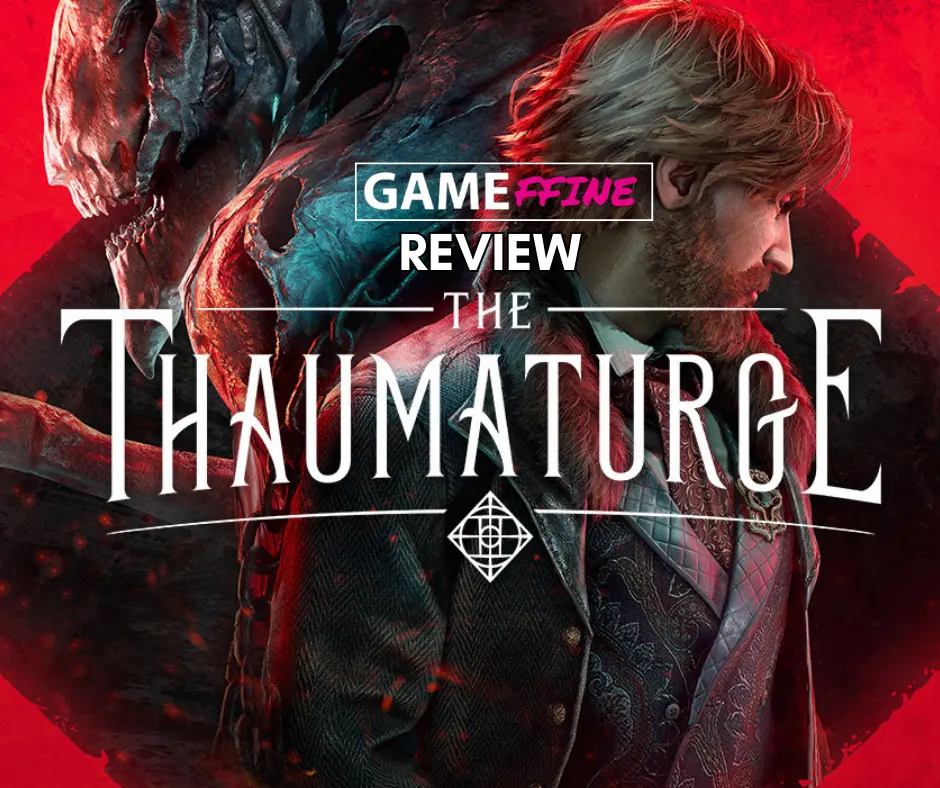The Greek origin of the word thaumaturgy alludes to performing a miracle. In Polish studio Fool’s Theory’s The Thaumaturge, the only miracles you’ll perform are summoning grotesque esoteric beings to beat the hell out of people who don’t agree with your opinions in turn-of-the-century Warsaw. Oh, and be BFF with Rasputin. Making morally dubious decisions in a city on the brink of revolution while aided by one of the most controversial figures of the early 20th century makes The Thaumaturge such a bizarre pitch. It doesn’t always stick the landing, especially when it comes to the RPG side of things, but The Thaumaturge is developer Fool’s Theory showcasing their world-building prowess once again. A fitting display for the studio tasked with remaking one of the most atmospherically rich RPGs of the last decade, The Witcher. With that aside, presenting Gameffine’s The Thaumaturge review.
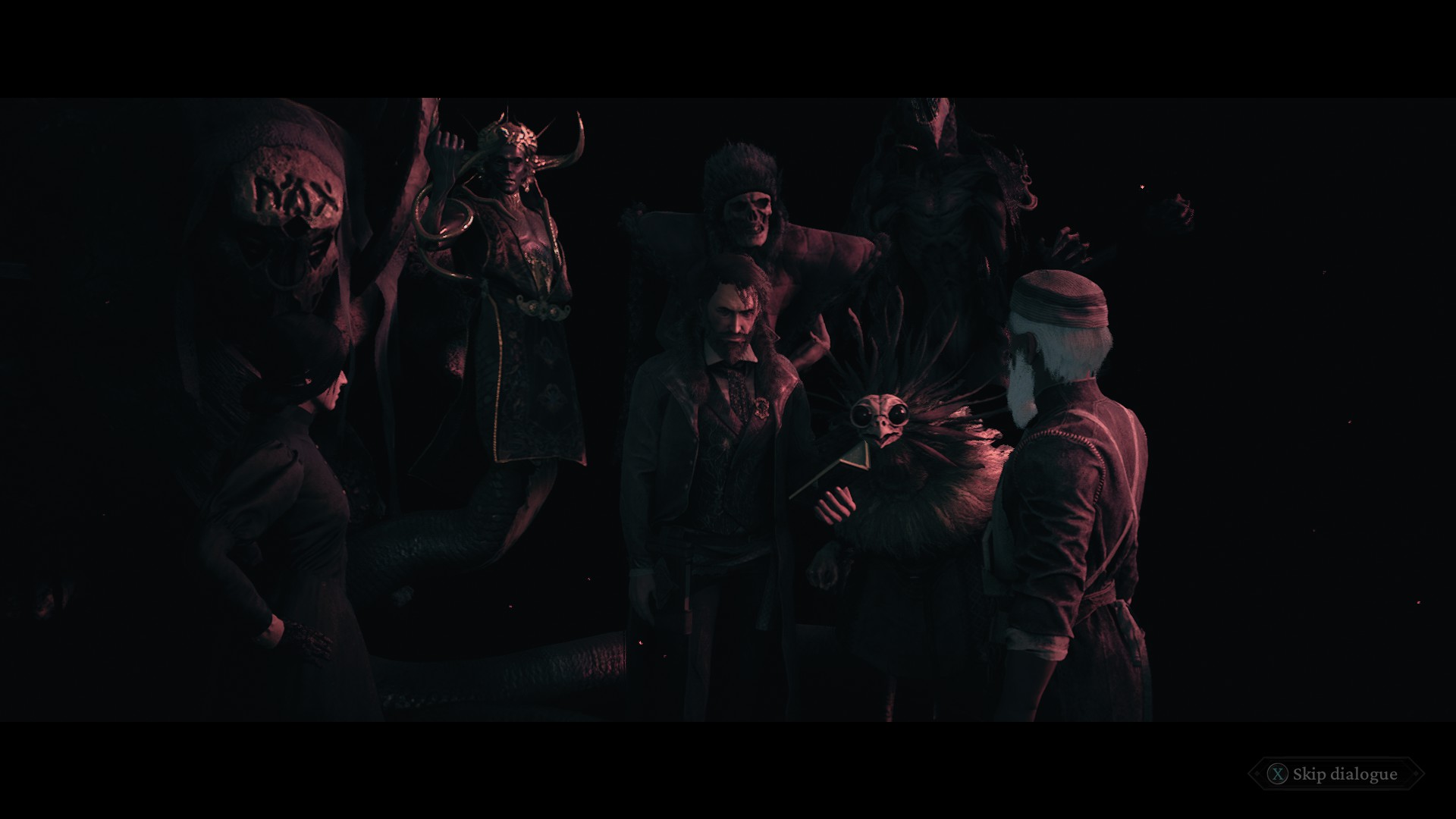
A Time of Great Strife
For the last 20 years or so, video games have strived to appreciate cultural diversity all across the globe in a variety of timelines and historical settings. Early 20th century Poland was a time rife with partitions, political instability, class struggles, resistance against Imperialistic powers, the advent of socialism, and folks with immaculate facial hair. Pre-war Poland is a historically monumental setting that’s barely explored in video games. This is where The Thaumaturge shines. By injecting the historical setting with a pinch of magical realism, Fool’s Theory has crafted a meticulous low-fantasy world teeming with political and racial tensions and inhabited by a cast of colorful characters and factions, both historical and fictional — not unlike what Ubisoft did with Assassin’s Creed 17 years ago. The Thaumaturge is filled with rich world-building, succinct codex entries, and lore dumps related to the era that help even non-history buffs familiarize themselves with the period and its historicity.
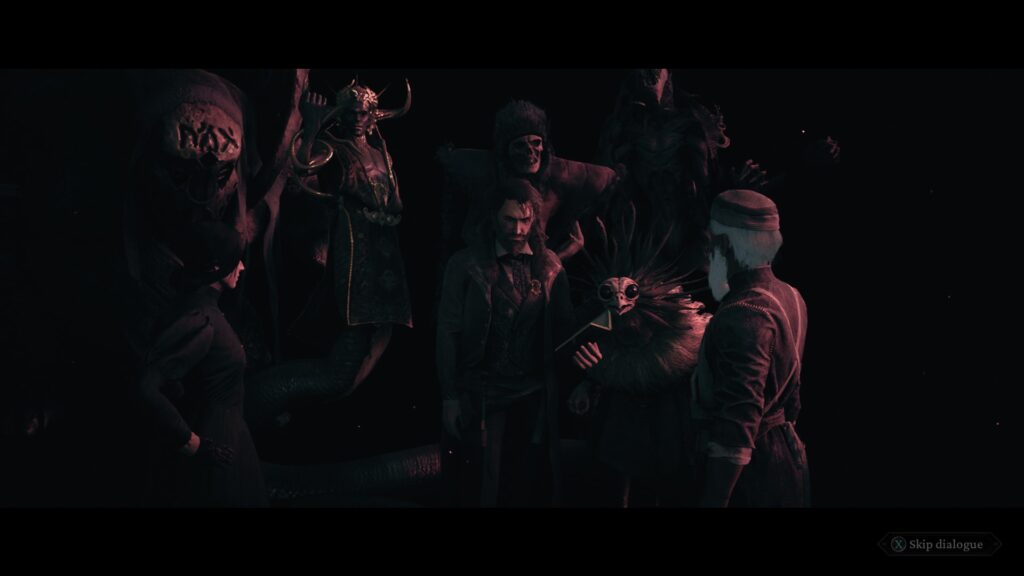
The Thaumaturge tells the story of the titular main character — one Wiktor Szulski. Wiktor is half-Polish, half-Russian, and comes from a family of Thaumaturges, gifted individuals who can see, and tame otherworldly entities called Salutors and utilize their abilities to discover secrets hidden within the human soul. The game begins with Wiktor, exiled from his homeland for over a decade, traveling to a remote Russian village to restore his connection to Upyr, his first Salutor. There, he meets Gregori Rasputin, a mysterious healer who fixes Wiktor’s ailments. Upon hearing of the passing of Wiktor’s father, he travels back to Warsaw to attend the burial ceremony accompanied by Rasputin who seems to have his own plan for Poland. The rest of the game explores Wiktor’s troubled relationship with his estranged father, the rest of his family, the Szulski legacy, and what his return means for the political climate of Warsaw. Wiktor and his Salutors lock horns with the Tsar government, the resistance movement, the Thaumaturge society as well as Warzaw citizens from various walks of life, class, and economic status.
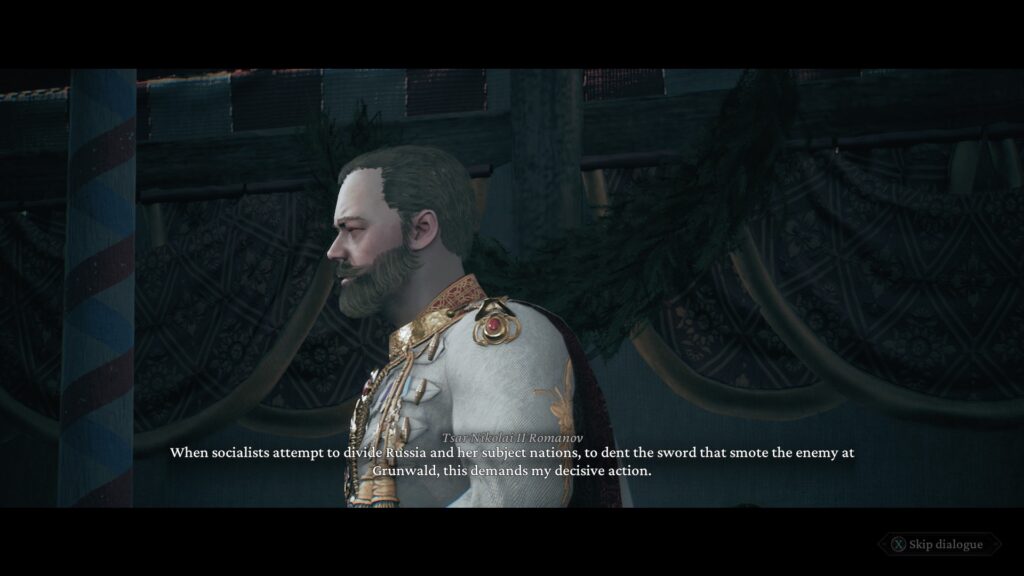
The narrative beats, Wiktor, and the rest of the cast are effectively The Thaumaturge’s biggest strengths. While the main story is told linearly, there are ample opportunities for role-playing and players are treated to moral scenarios where they can shape Wiktor’s personality. Furthermore, you can influence Wiktor’s relationship with family, and friends and even be homies with Rasputin if you choose to. The game features six Salutors in total, and at least two of them are optional. The Salutors are inspired mostly by Slavic folklore and are tied to specific dimensions of human nature dubbed Word, Heart, Deed, and Mind. Each Salutor belongs to one of these dimensions, and the dimensions decide how they respond to various situations, whether in combat or exploration. Like any good RPG, the choice you make in the game not only has immediate effects but also affects the story and fate of the characters in the long run. It’s impossible to see everything the game has to offer in just a single playthrough and from what I’ve played, you can do three playthroughs before exhausting all the content on offer.
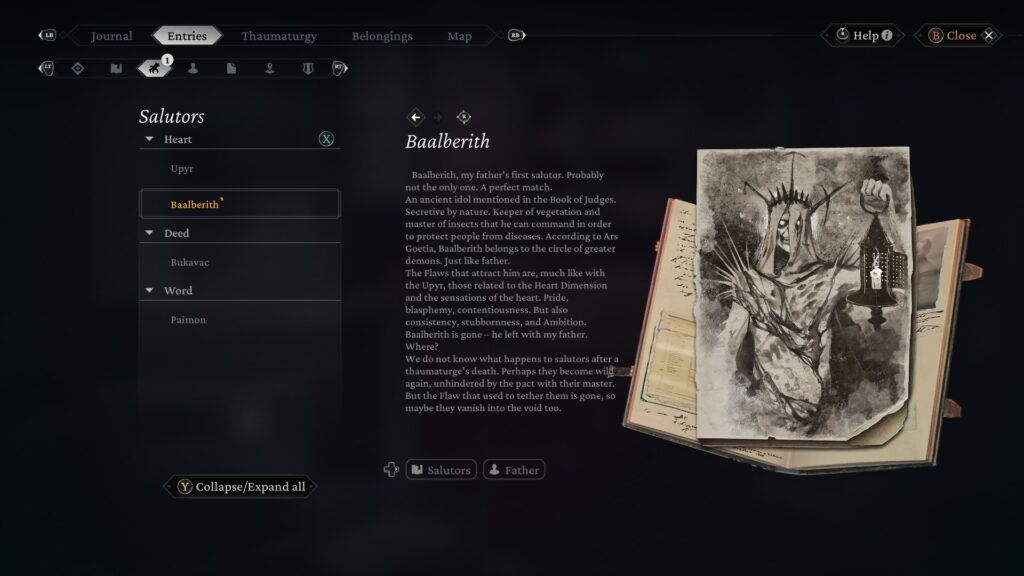
The dialogues are not of the highest quality, but they do the job just as well. There are also certain instances where the choices you make in the story are not properly reflected in the dialogue and there are plenty of awkward moments during conversations. Another annoying aspect I found is that despite the game having an attribute system, not a lot of encounters and dialogue choices make use of skill checks. It’s only in the last act that these skill checks pop up one after the other. This design can result in players evenly dividing attributes, thinking that they serve no purpose in the story, and getting bombarded by capstone skill checks only in the last two hours of the game.
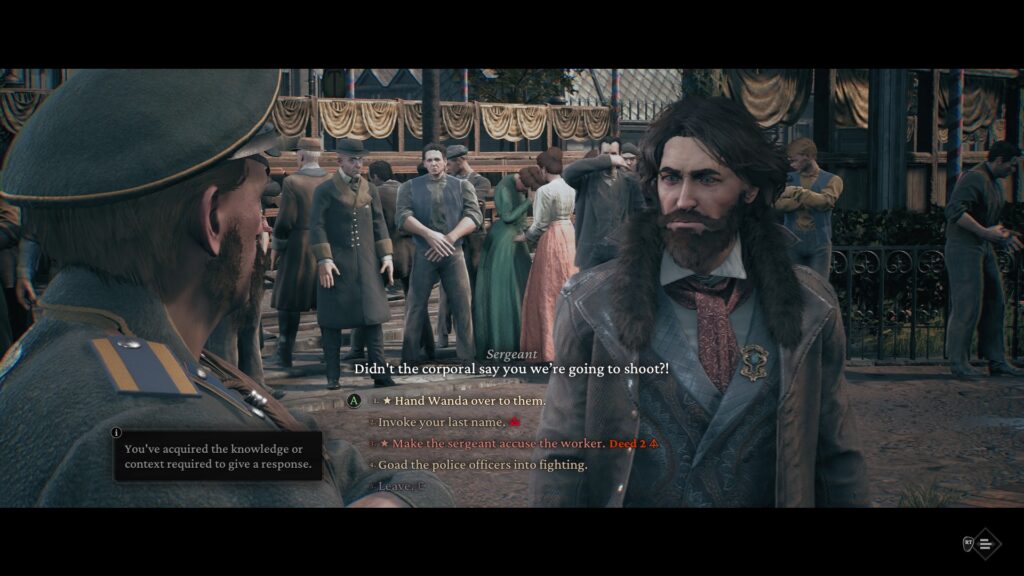
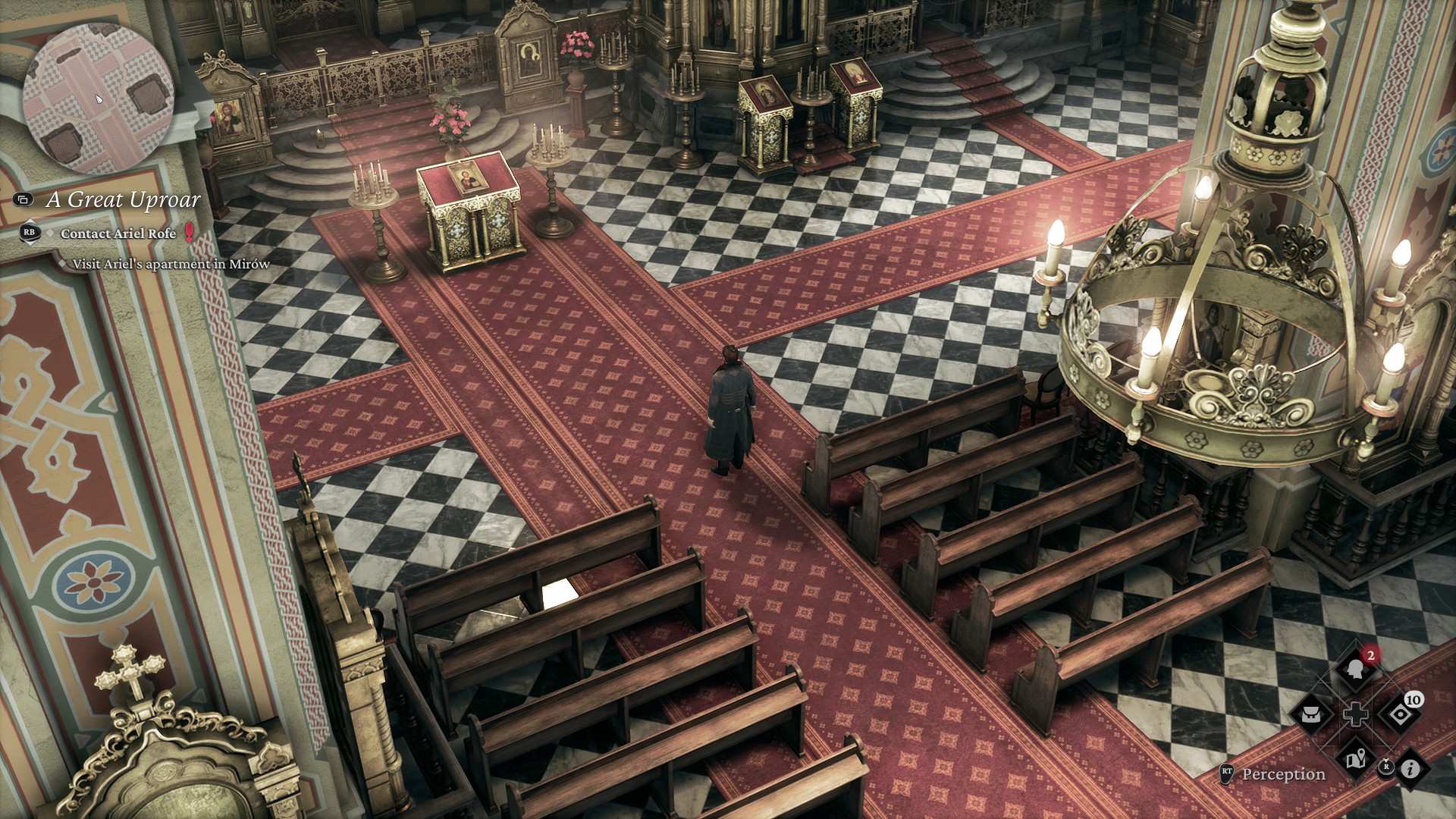
Budget Detective
While The Thaumaturge’s story and narrative are unique, the gameplay department is anything but. Fool’s Theory’s latest outing is a story-driven RPG with a dynamic pseudo-isometric camera angle and turn-based combat. The store page also mentions “investigative mechanics”, but the game’s investigation boils down to interacting with highlighted items and watching the game automatically deducing the nature of the item and coming to a conclusion on what has transpired. Aside from searching for clues (which are also highlighted at the press of a button), there’s no player agency involved in these investigations, as the game automatically does everything for you. Some of the clues can also be attribute-locked, but the game also showers the player with XP, so much so that they never run into this problem. This investigative mechanics (if you can call it that) forms the majority of the gameplay in The Thaumaturge. All quests essentially boil down to gathering clues and reaching a conclusion. This would not be a problem if there was any effort required from the player, but sadly, that is not the case.
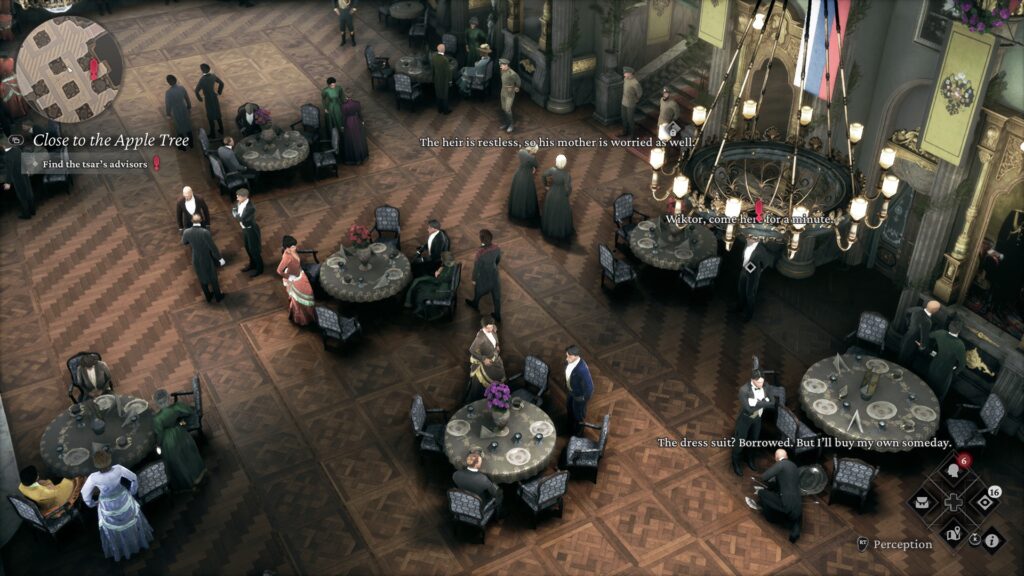
The game features a handful of reasonably sized maps, acting for the various districts of Warsaw. The majority of the moment-to-moment gameplay involves running around the various districts, accepting quests, exploring, and finding collectibles. The world, while static, feels believable thanks to the copious amount of detail in the environments, NPCs going about their business, and the visual fidelity provided by Unreal Engine 5. The side quests and city secrets also make good use of the maps. Speaking of side quests, Fool’s Theory has gone for quality over quantity. From RPG staples such as tracking down a serial killer, solving a dispute between the working class and a contractor, and finding the culprits behind a terrorist attack, to helping establish a university where women are allowed to study, there’s a handful of engaging side quest to find and complete. The side quests lean into the politics of contemporary Warsaw while also not going full-on social commentary mode.
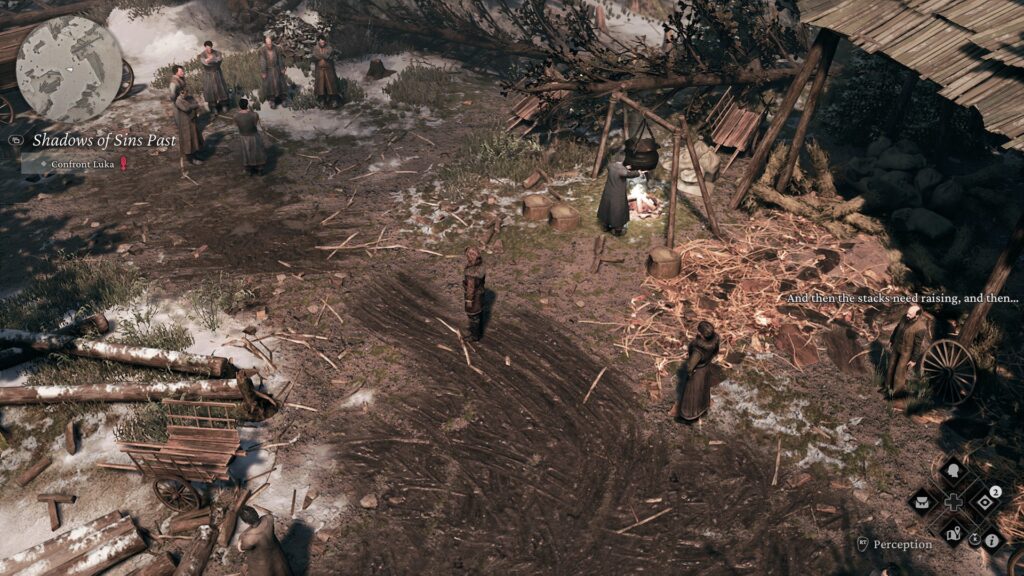
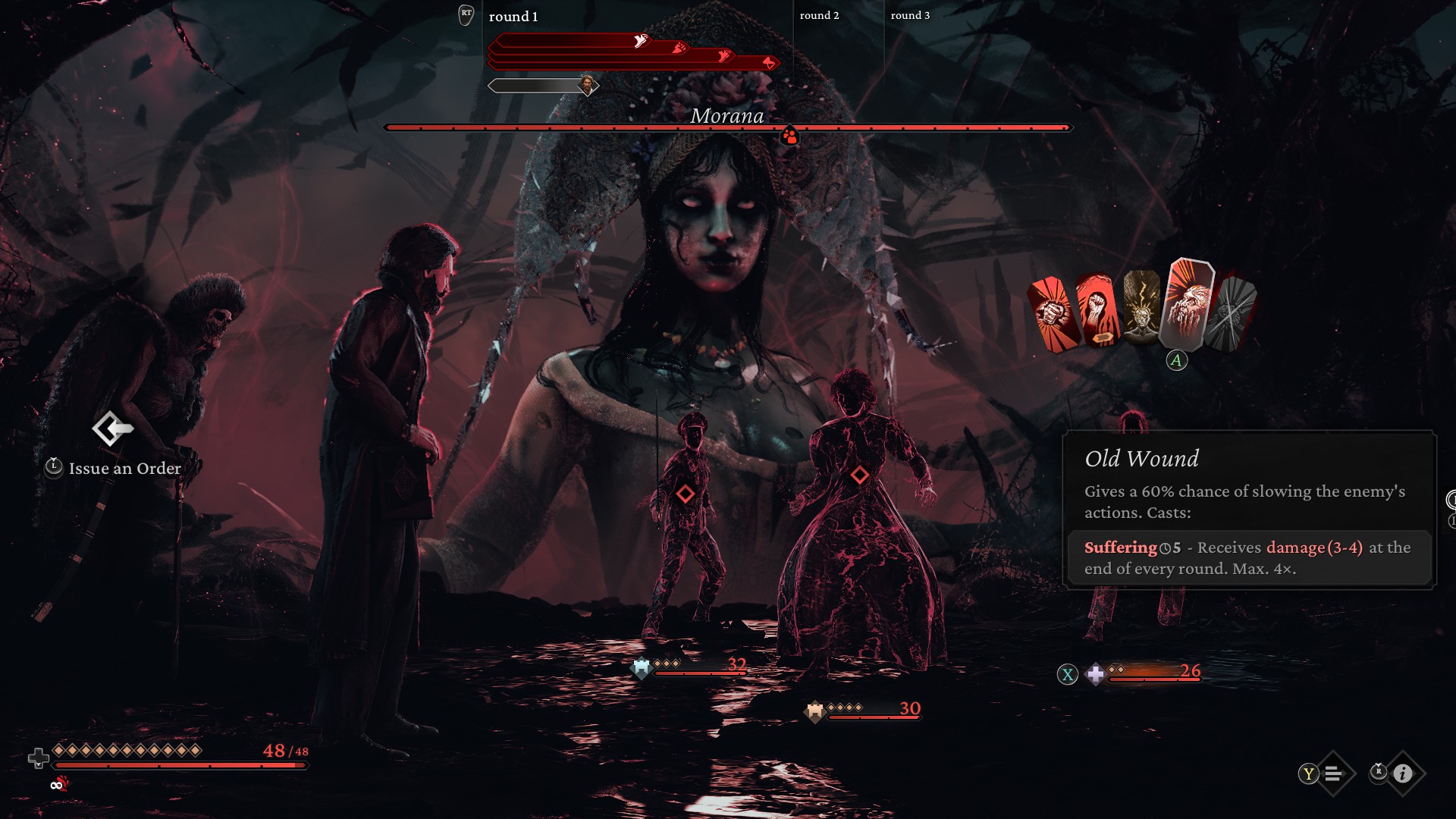
Wiktor’s Turn to be Based
Then there’s the skill system and combat. As pointed out above, The Thaumaturge has four dimensions, which it uses in exploration, conversations, and combat. Each dimension is made up of several nodes of new skills, abilities, and stat increases, and are inhibited by two Salutors each. Each Salutor has its abilities, and even more abilities can be unlocked by investing in the respective dimension. Skills have ranks and each time a new skill is unlocked, it has to be slotted into an ability matching its rank. Skills include buffs like X% chance to do more damage, marking an enemy to take more damage, etc. You can only use the skills that are slotted and the slots are limited to the number of abilities unlocked. Health and MP (called focus) can also be increased by investing XP in various dimensions. XP can be accumulated through combat, solving quests, finding collectibles, and quite simply by interacting with any highlighted item in the world.
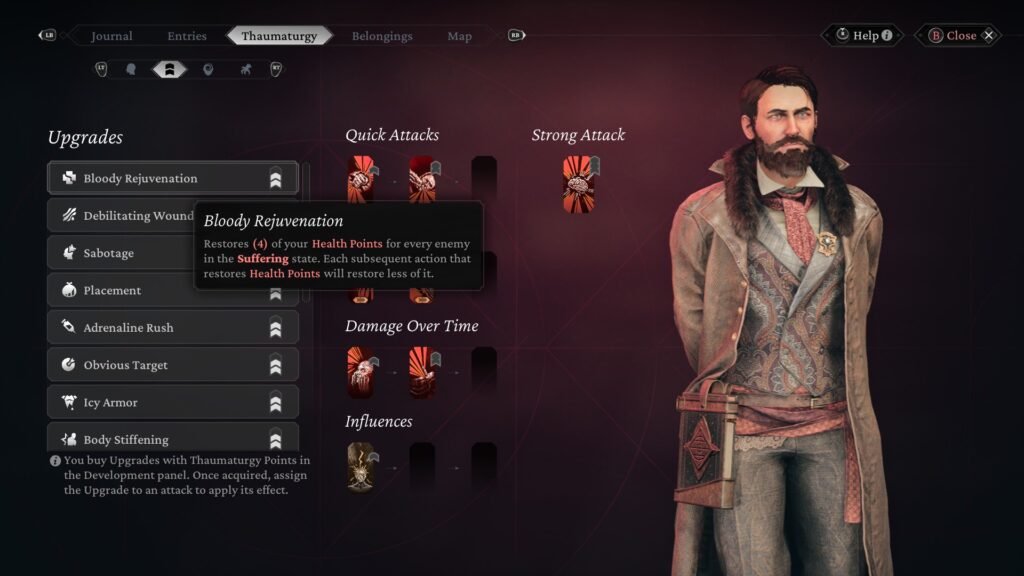
The turn-based combat system in The Thaumaturge is also interesting. Like some JRPGs, the game switches to a third-person perspective during battles, and battles take turns across multiple rounds. Players can attack using Wiktor and his Salutors. All upcoming enemy moves in a round are displayed on the initiative bar beforehand so that players can strategize on the fly. What’s unique is that in The Thaumaturge, attacks are placed into a queue that can be altered, modified, and changed along the way based on your decisions. They then play out once the attacks are finalized. For example, Wiktor can queue a strong attack that is delivered after two rounds and can use a Salutor’s ability to delay an enemy’s planned attack so that Wiktor remains safe until he lands his planned attack. Most abilities in The Thaumaturge require more than one round to cast and thus, combat plays out like a puzzle, where players have to keep a close eye on the initiative bar and plan their moves accordingly. It’s mostly a game of reactions rather than a race to see whose HP goes down first.
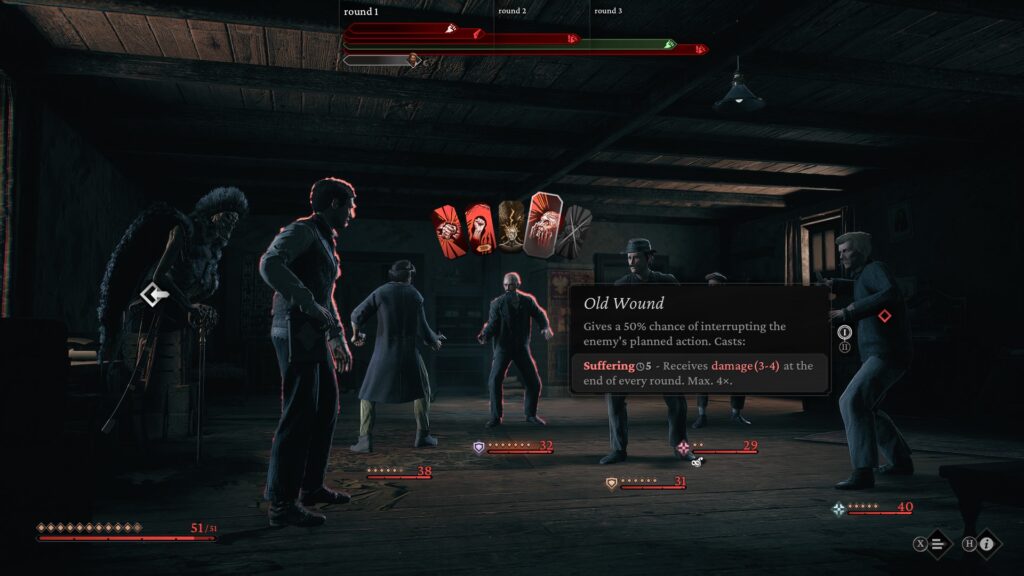
The combat does look cool thanks to the excellent animations and all the Salutor abilities. Sadly, the game doesn’t take full advantage of this interesting battle system. For starters, there’s barely any enemy variety. Throughout the game, you’ll only fight three types of human enemies — unarmed, melee, and ranged and they are all more or less the same. Combat encounters all play out the same way, the only difference being that later in the game, enemies will be protected by certain modifiers that must be disabled by using a specific Salutor. Even all the boss fights are the same with Wiktor having to fight the same grunts with the boss just standing still in the background and applying buffs/debuffs each round. The lackluster encounter design hurts the 20+ hour campaign big time. It is a shame because the game genuinely has a lot of fun abilities to experiment with, but it rarely demands much effort from the player. Up until the very end, I was sleepwalking through combat encounters and it was only in the final boss fight that I had to think up a proper strategy due to a sudden difficulty spike. There’s also the fact that the combat queue bar is designed quite poorly and it took me a long time to figure out how everything works.
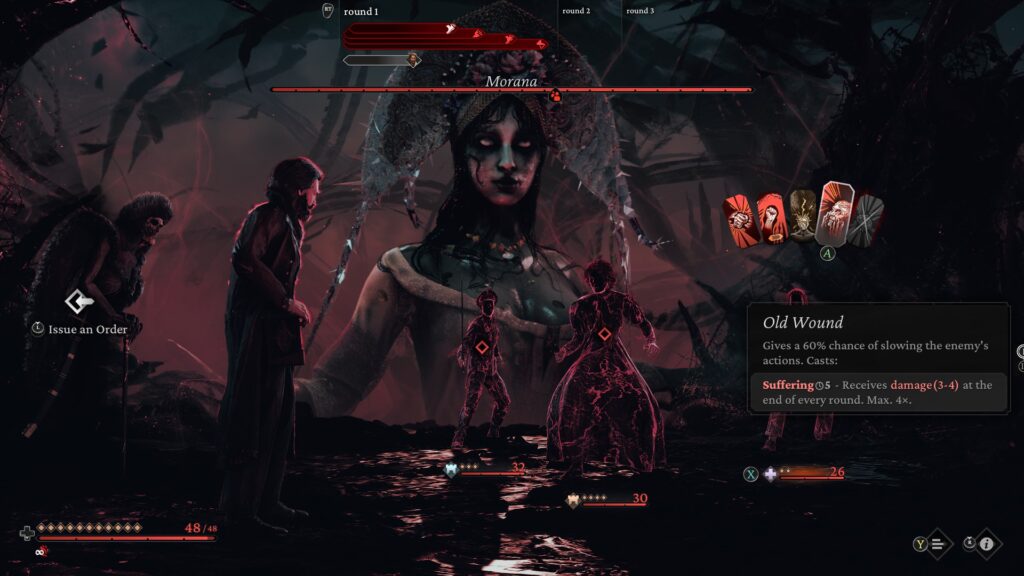
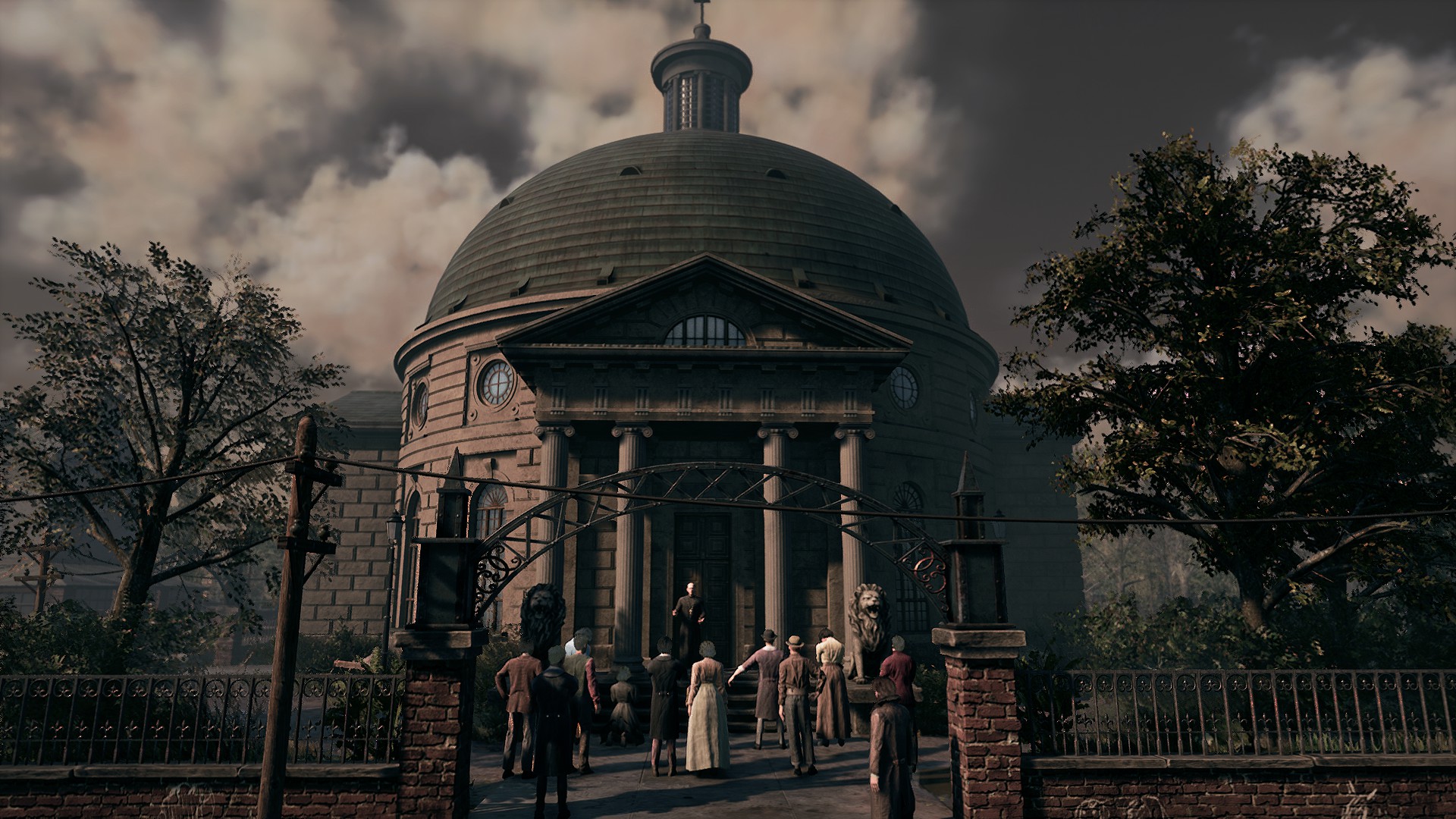
Bringing Warsaw to Life
The Thaumaturge is built using Unreal Engine 5, and thus, the game is pretty nice to look at from above. A lot of attention has gone to making Warsaw look believable. The same can’t be said for the facial models but they look good enough. The game ditches the isometric camera in favor of interactive cutscenes to tell its story and it’s fully voice acted. The animations are a bit stiff for these zoomed-in cinematic sections and constantly remind the player of the game’s production values. The voice acting is spotty for several characters. Still, since the cast is full of non-native English speakers, the goofy dialogue deliveries can be forgiven and even add to the charm. I’m just thankful for the fact that the game is fully voice-acted. If you’re someone like me and enjoy some jank in their RPGs, then The Thaumaturge won’t disappoint in this audio-visual department.
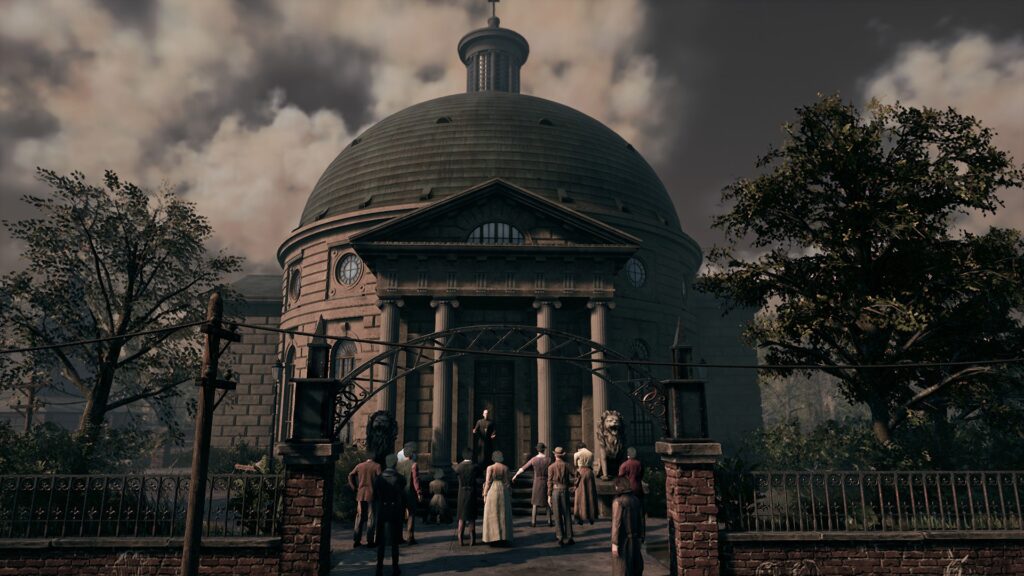
Unreal Engine 5 comes at a toll. The Thaumaturge is pretty demanding as far as isometric RPGs are concerned. At 1080p max settings, I was able to get a mostly stable 60 fps on my RTX 3070 after disabling Lumen but I had to turn on DLSS to get smooth 60+ gameplay on an RTX 4060. There’s a wide variety of settings to tweak and frame generation is even present. However, I found that the frame generation adds a noticeable amount of input lag and ghosting that wasn’t fixed by turning on Nvidia Reflex. On the Steam Deck, the game had to be run on low settings with aggressive FSR upscaling to get a stable 40 fps but even then, the fps dropped well below that during certain sections. I didn’t run into any major bugs or glitches aside from one or two crashes in my 30 hours of playtime. Do note that at the time of writing this review, the devs have made a new build of the game available for reviewers, so YMMW.
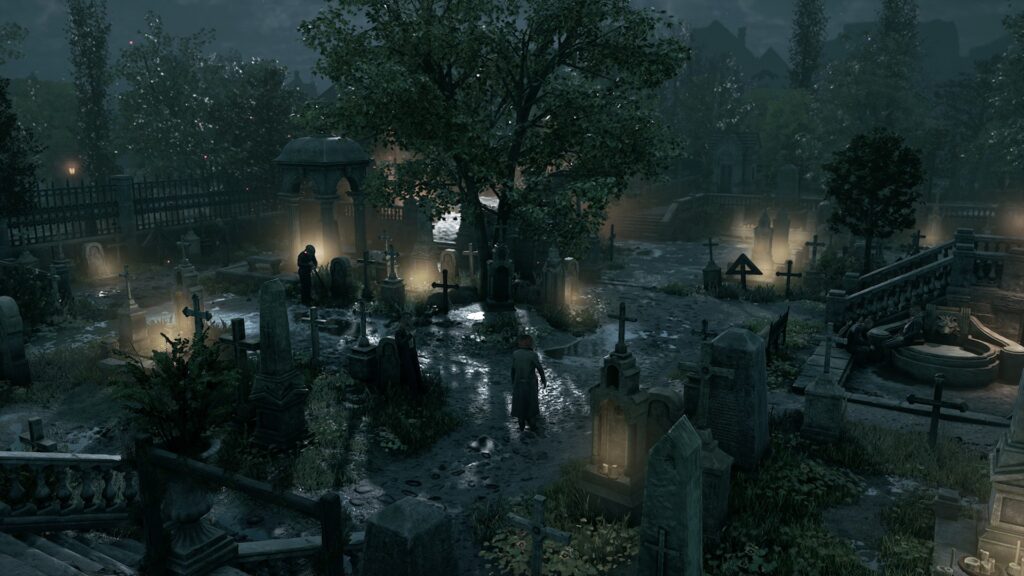
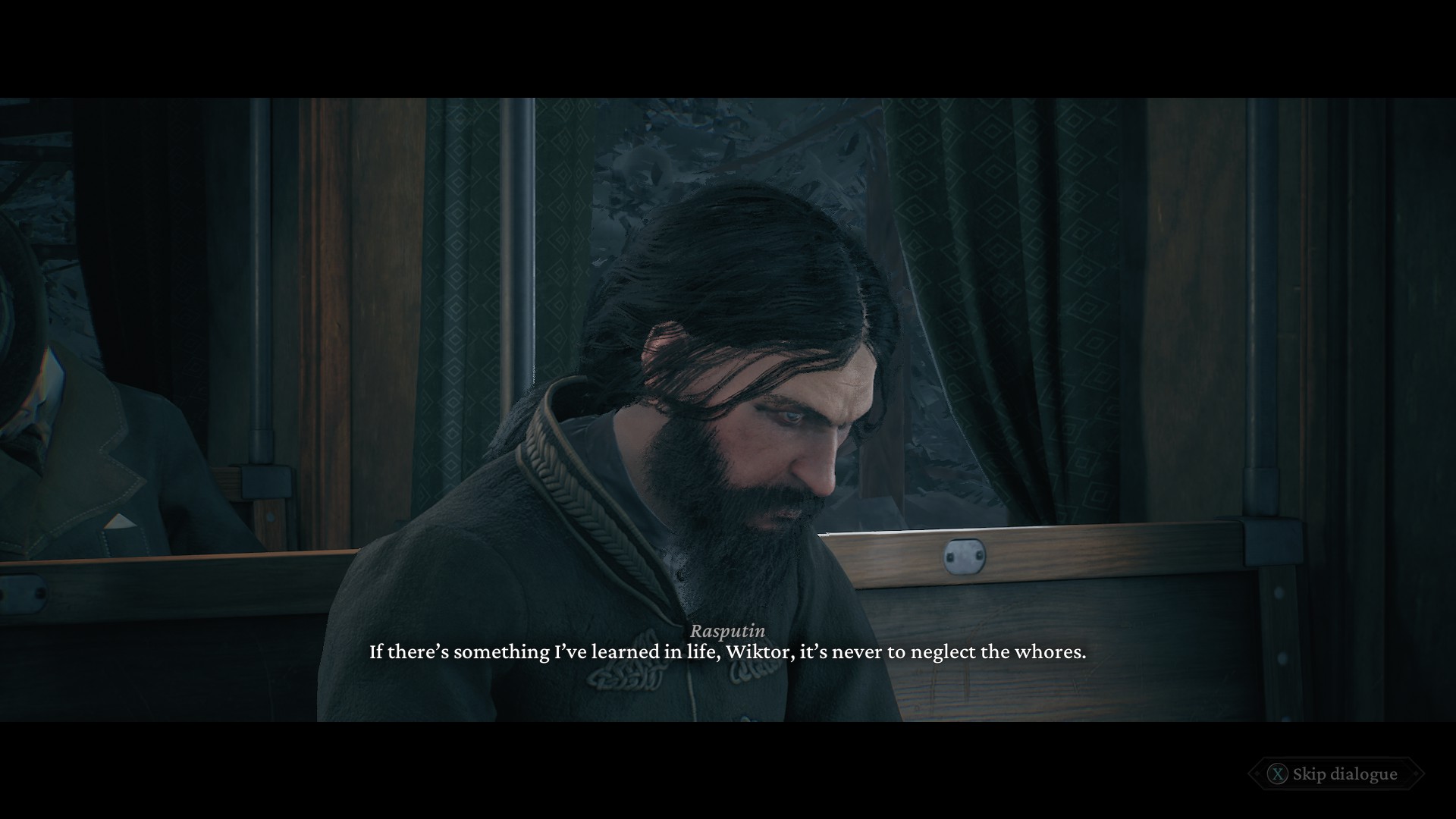
Real Talk
The Thaumaturge is a curious experiment with an unexplored setting and a unique take on the classic turn-based combat. Fool’s Theory has struck gold on the former thanks to an interesting story, rich worldbuilding, and a colorful cast of characters. However, the combat system is severely underutilized and left me wanting more. The same can be said for the investigative part of the gameplay as well. That being said, It’d be a lie if I said I didn’t have fun within the said constraints. As a purveyor of Eurojank, there is a certain allure to the game that I couldn’t resist. That doesn’t mean you’ll enjoy the game as much as I did. The Thaumaturge could have easily been one of the best RPGs of the year if it had more to offer in the gameplay department.
FINAL RATING: 73/100
The Thaumaturge Review
The Thaumaturge ReviewThe Good
- Unique world and lore
- Rich worldbuilding and a cast of colorful characters
- Choice-driven narrative
The Bad
- Repetitive encounter design
- Very few enemy variety
- Investigative elements are barely existent
